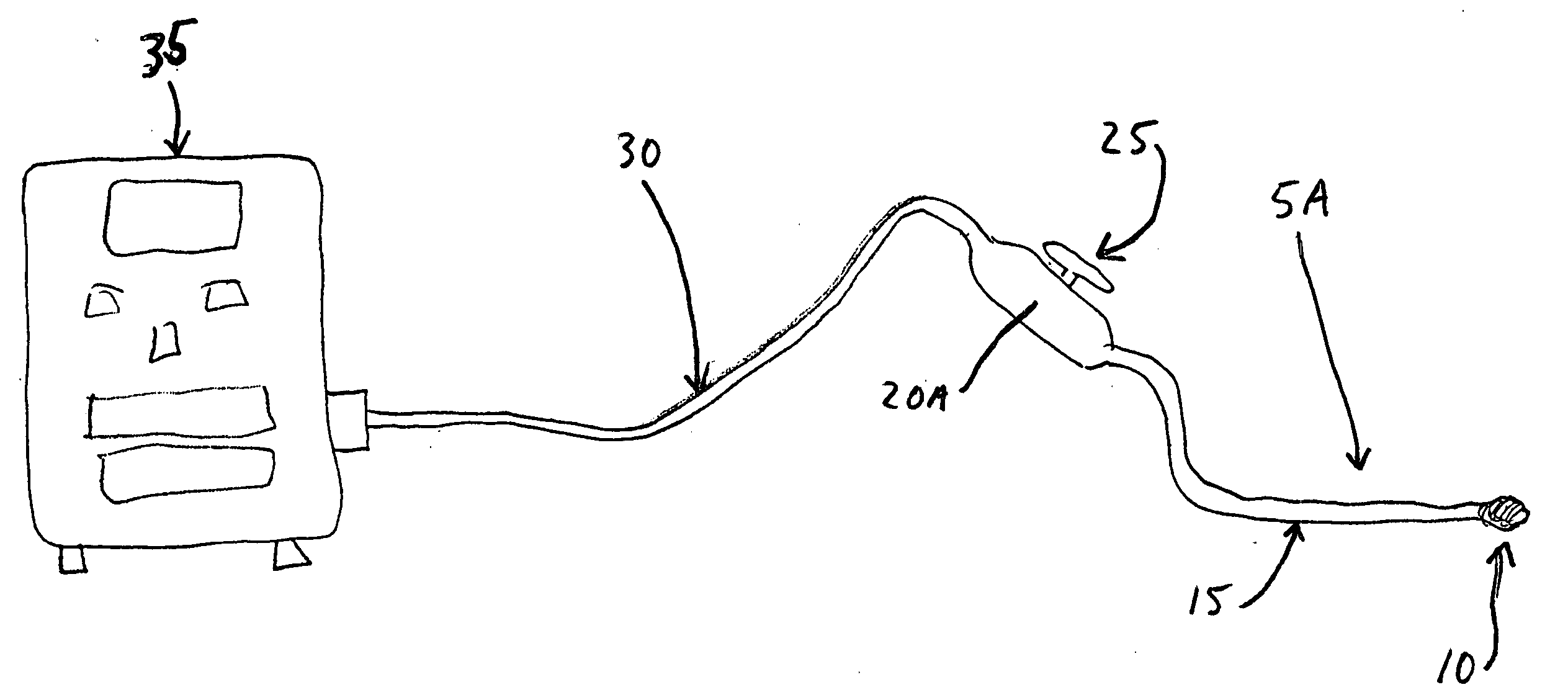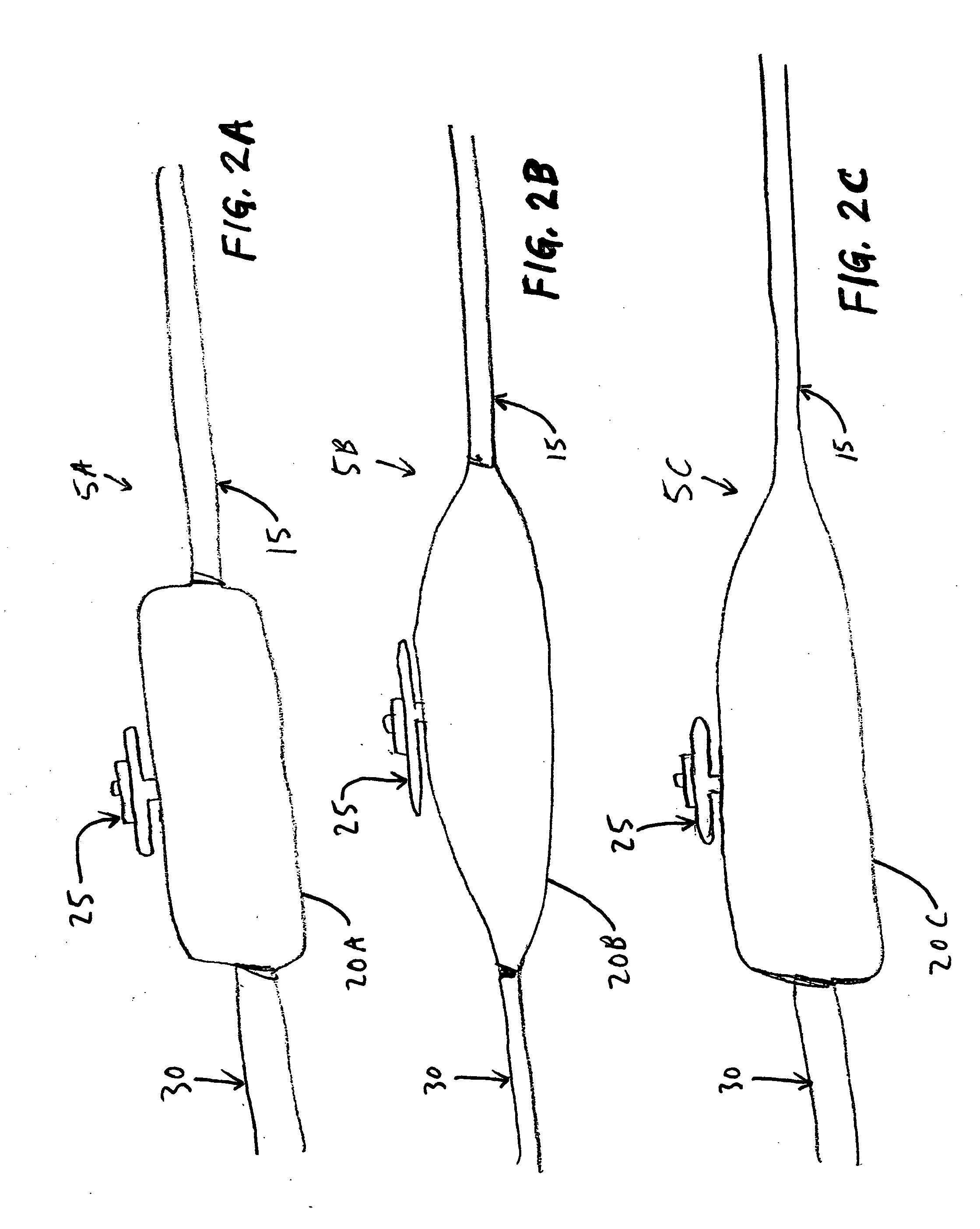Apparatus and method for holding a transesophageal echocardiography probe
a transesophageal echocardiography and apparatus technology, applied in the field of medical apparatus and methods, can solve the problems of not providing a very user-friendly configuration, unable to provide a suitable device, and generally unstable supports
- Summary
- Abstract
- Description
- Claims
- Application Information
AI Technical Summary
Benefits of technology
Problems solved by technology
Method used
Image
Examples
Embodiment Construction
[0057] Referring to FIGS. 4, 5A, 5B, 6, 7A, 7B, 8, 9A, 9B, 12A-12C, 13A-13C, and 14A and 14B, and in a preferred embodiment of the present invention, there is shown a holder device 40 for supporting one of TEE probes 5A, 5B, 5C. For the sake of simplification, and unless otherwise specified hereinbelow, TEE probe 5A is identified and described but TEE probe 5B or TEE probe 5C may be used in place thereof.
[0058] Preferably, holder device 40 is positioned at the head of an operating room table 45 (FIG. 14A) or at the side of table 45 (FIG. 14B). Holder device 40 preferably holds TEE probe 5A in such a fashion that it does not stretch a patient's bodily structures, such as the lips, and allows the anesthesiologist to place TEE probe 5A in holder 40 when the examination is finished. Later, when a follow-up examination is needed, TEE probe 5A is lifted off holder 40 quite easily.
[0059] Holder 40 is preferably attached to the side or the top of operating room table 45 (FIGS. 14A and 14B...
PUM
 Login to View More
Login to View More Abstract
Description
Claims
Application Information
 Login to View More
Login to View More - R&D
- Intellectual Property
- Life Sciences
- Materials
- Tech Scout
- Unparalleled Data Quality
- Higher Quality Content
- 60% Fewer Hallucinations
Browse by: Latest US Patents, China's latest patents, Technical Efficacy Thesaurus, Application Domain, Technology Topic, Popular Technical Reports.
© 2025 PatSnap. All rights reserved.Legal|Privacy policy|Modern Slavery Act Transparency Statement|Sitemap|About US| Contact US: help@patsnap.com



